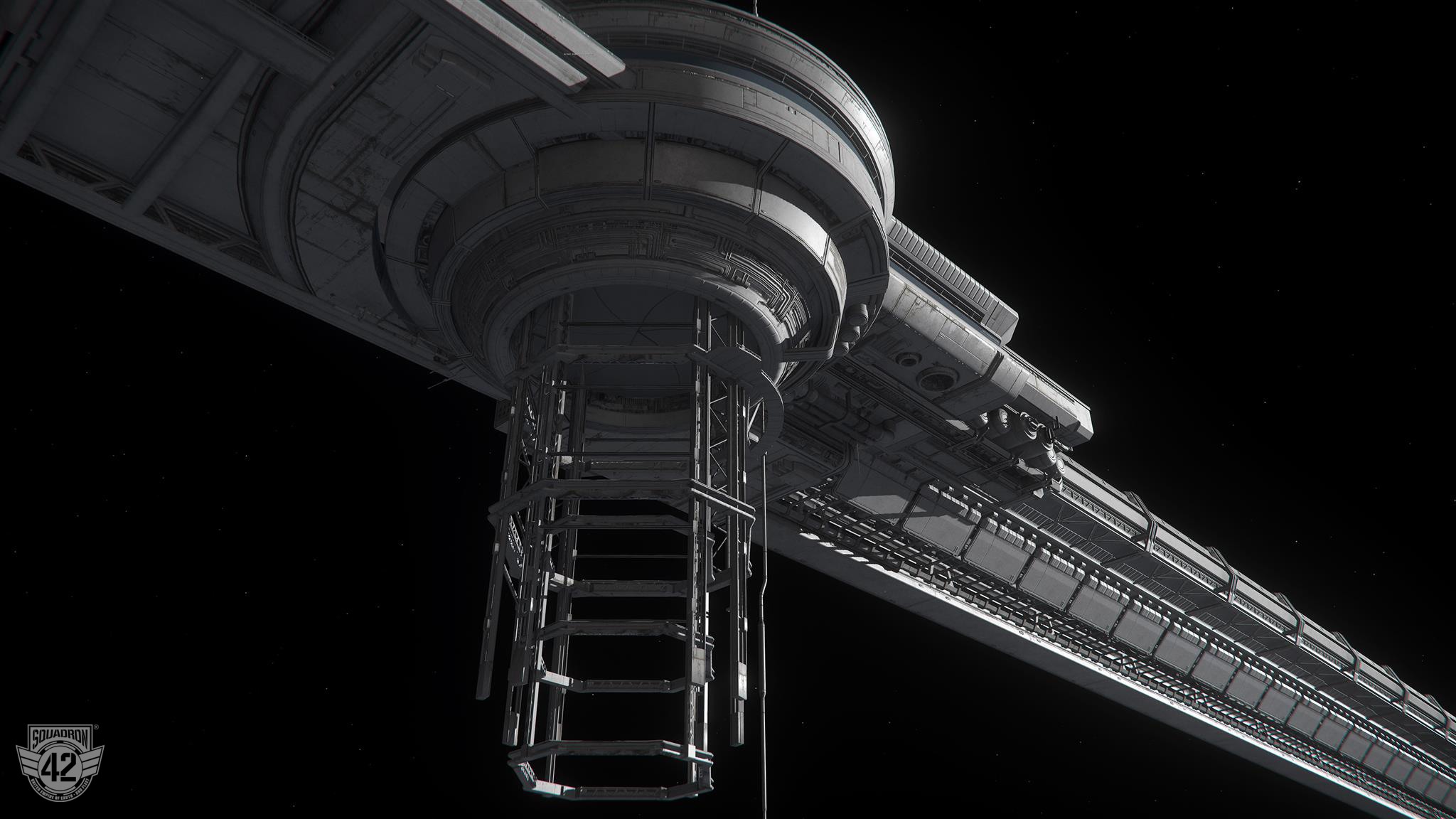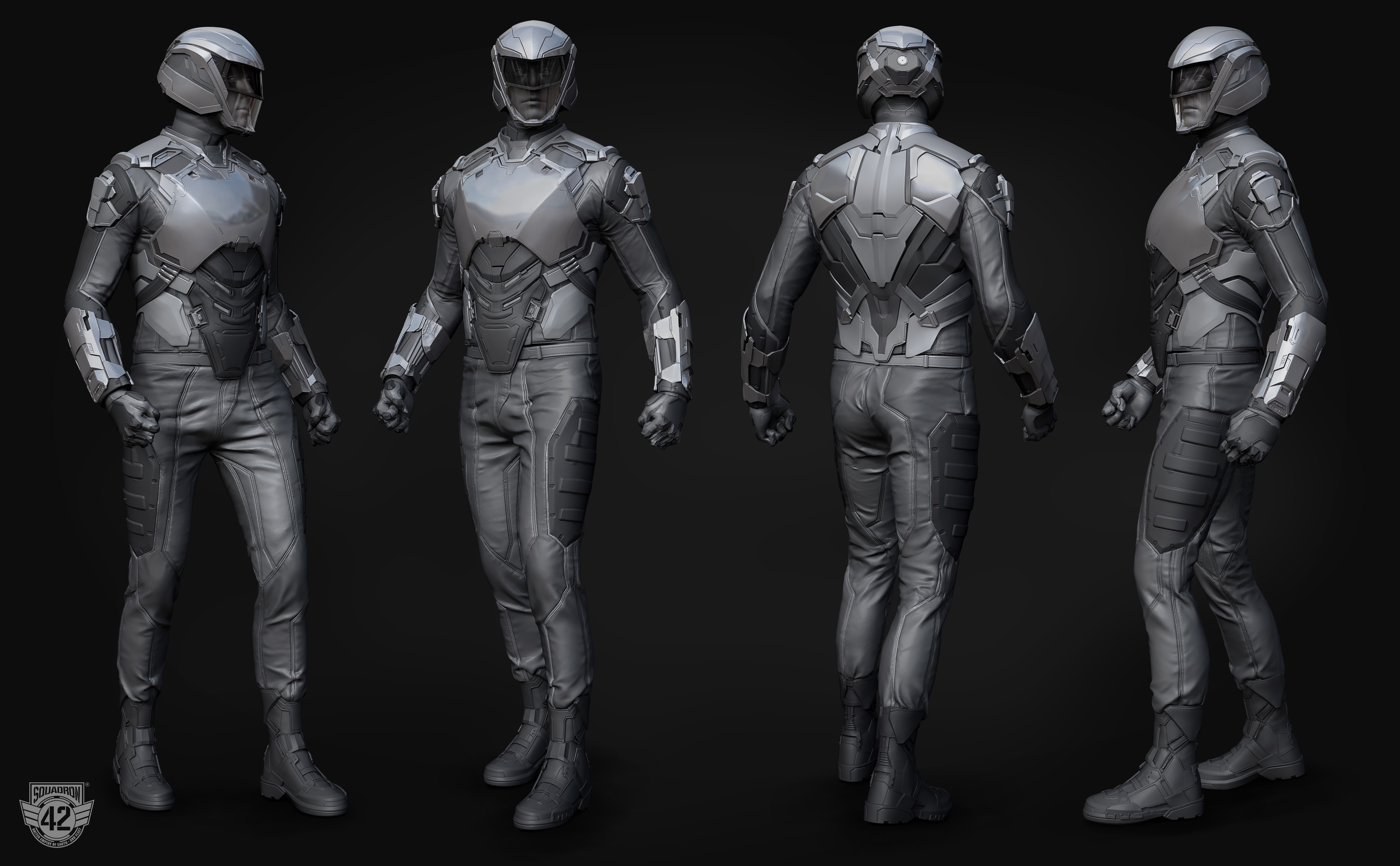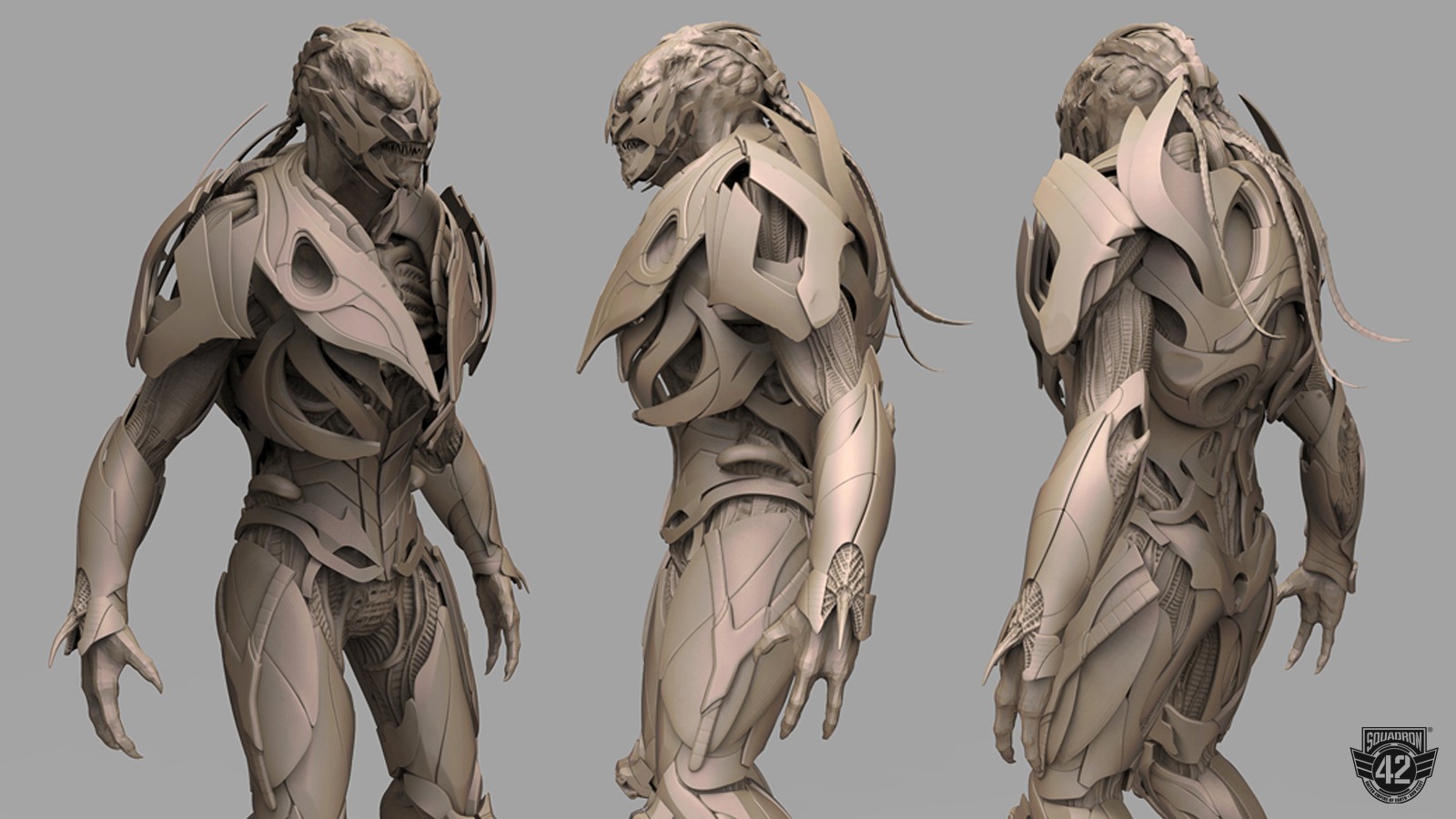Squadron 42 Progress Update | February 2019
Welcome to some more Star Citizen with a summary and breakdown of the Squadron 42 February 2019 Update which went over a what they’ve been working on for Episode 1 and what they are now moving onto. If you are interested in following the development of the game then this video will interest you. Also a lot of the features and tech here will be making it’s way over to the PU in the not too distant future.
Level Design & Cinematics
They have 4 major teams working on various aspects of level design
One is responsible for the FPS-heavy chapters and will work closely with the actor and AI feature teams. A spaceflight team will work with the Ship AI and New Flight Model/QT team, and a dedicated social team will focus on all social AI, usables, and NPC activity. Lastly, the tech team will work alongside the gameplay story and cinematic teams to prepare motion-capture and conversations.
Lighting work continued on the Javelin, with the first takes done for several of the states the ship cycles through as the story progresses. The blend shader is now fully up and running and rolled out to the team, giving them far more opportunity to texture large assets while maintaining pixel density.
Two key areas seen within the campaign are now approaching greybox completion and are in the final weeks of ‘soft-gate’ review (playable and traversable spaces with close-to-final geometry).
significant effort has been put into destructible and deformable objects that will be placed around every area of the campaign. This work is currently being rolled out into a single ‘hero’ area to give the team a better idea of the overall costs involved and to help them establish a visual language understood by the player (e.g. allowing the player to easily recognize which items can be destroyed, deformed, or moved).
Work continues on Archon Station. With its exterior ‘watertight’, the team is now tying up loose ends where sections of the exterior may intersect with the interior. While easy to hide things like this, the entire station is being constructed with correct interior and exterior dimensions as the ships are.
Transport systems are being placed into Archon Station, with final art for each section currently being worked on.
Cinematics have improved their work flow and can now work or multiple scenes more easily at that same time.
The groundwork was laid for the most crucial step in the cross-object-container cinematic pipeline: accessibility of interior sequences and their entity nodes from an exterior master level. This means the team is still able to work on interior scenes (e.g. a Bengal carrier’s bridge) while the ship is flying around in battle and banking on a navigation spline. This is crucial for camera movement as lighting and exterior vistas play a huge role in how bridge scenes appear. It also makes it easier to adjust the timing on a master sequence that brings together interior and exterior sub-sequences.
A key sequence was brought into the current Shubin Coil pocket, as the placement of asteroids and clouds had changed due to the evolution of gas cloud tech, so there was a need to adjust framing and lighting.
Some scenes were adjusted in the Shubin Foundry, Gainey base, and other places across the game. Camera passes for other key scenes were completed, including one involving the Vanduul.

Ships & Ship Features
The SQ42 Props Team has been working towards finalizing item sub-sets while continuing to assist the Gameplay Story Team by creating props used in motion capture shoots and generally making assets animation-friendly.
They also completed modifications to the vehicle targeting system so that external items, such as ship engines, can be specifically targeted. Improvements to ship combat systems continued via automated gimbals, HUD improvements to support Ping & Scanning, and the vehicle ‘XML to DataForge’ migration began. Also, a vehicle gimbal aim assist feature is nearing completion.
Weapons
The Weapon Art Team worked on the Multi-Tool rework, Kastak Arms Ravager-212, and the level 2 and 3 upgrades for the Hurston Dynamics Laser Repeaters. They also made minor adjustments to iron sights on a handful of weapons to improve the sight picture and make them more user-friendly. They completed work on the Behring Sawbuck repeaters and kicked off work on Gemini S71 assault rifle and Kastak Arms Coda pistol.
They also began their first pass on the Xi’an ballistic rocket launcher because the trickiest part of this weapon is getting the balance right between traditional ballistic effects and the overtly-sci-fi Xi’an effects.
New weapon attachments are starting to make an appearance internally and have required the authoring of a new set of weapon systems and a tools base that can support attachments in the animation packages.
They also updated the underlying metasystem in the weapon rigs to help the animators export weapons.
Character
They’ve been working on the DNA feature, which allows players to create their own unique avatar to play through the game as.
They are making steps to finalize the implementation and pipeline of the new facial customization tech. They switched the system’s source data format to the newer component-based loadout currently used throughout the game. This system allows players’ customized faces to be stored persistently in the database and the corresponding data packets to transfer efficiently over the network and be applied to the correct avatar at runtime. Likewise, it allows all NPCs (every shopkeeper, security guard, civilian and eventually mission givers) to have a unique face built internally by our designers. While R&D on the new ‘DNA’ system was done using male faces, the ‘face pool’ for female characters is being populated and is planned to come online at the same time.
They also began modeling various other characters and clothing, including the Basilisk Advocacy Agent armor. The character artists continue to create new outfits and update old ones to tie into specific in-game events.
They improved the vault and mantling mechanic by making it work better with different height obstacles and angles, automatically detecting whether to vault or mantle, and enabling mantle when crouched.
Progress was made on the Usable Builder, a tool that’s used to create and debug all usables. It allows the team to easily visualize usables, edit their properties, and test the different use channels.
The Actor Feature Team started work on a new visual tool for setting up carriable items it’s designed to lessen the time it takes to add new items to the game and make it easier to debug when testing picking, carrying, and inspecting.
Tech Animation supported the various teams working on female animations with tool development, asset conversion, and batch processes. The team also created new head assets for mission givers while refining current ones. The team’s currently refining head assets at the foundation of player face customization.
Video comm calls can now be triggered by the track view editor, which allows video comms with NPC characters to be easily implemented within larger cinematic sequences. Because track view gives control over things like the camera, lighting, and particle effects, it offers much more control over how comms are presented. Another feature implemented for the track-view-triggered video comms was to allow pre-rendered video to be played in place of any animation.

AI
The AI Team worked on the perception system, which was expanded to handle damage stimuli. AI characters now have proper perception of damage, so they can figure out the location of the source and will behave accordingly by tracking enemies and updating the knowledge they have about them.
For the mission system, they exposed several new functionalities to the designers, such as a variety of task nodes, new variable types, and new core functionalities. A ‘group’ variable was introduced that can automatically be filled, for example, when spawning AI characters so that designers can easily track the dynamic elements they’re interested in.
The team adapted the ship’s AI to work with the New Flight Model and in the process took advantage of the changed handling to allow closer and more rewarding dogfighting.
Gunship behavior was modified to enable ships to circle targets and bring the maximum number of turrets to bear. Fighter behaviors were also modified to get the most out of the New Flight Model.
System Design worked with the SQ42 Mission Team to explore the specific needs of FPS AI for the campaign, and research was done on how to improve the overall accuracy of FPS AI.
QA is incredibly important in getting SQ42 upto spec – testers built tools to help test multiple aspects of expansive levels more effectively. The AI feature tester performed regular checks on the various AI in the SQ42 chapters, focused on Cinematic scenes and delivered additional debug info for any reported issues.
Engine
The Graphics Team’s SQ42 focus has been predominantly on performance:
This included fixing various multi-CPU issues which were limiting the performance by sometimes forcing a CPU to wait for the other due to the way they accessed specific areas of memory. The CPU-intensive technique used to clip volumetric fog to interior rooms has been completely replaced with a GPU compute shader which frees up further CPU time. The final improvement was to re-write how they merge drawcalls, with the aim to increase efficiency and support multi-threading. This will take load from the CPU used for the submission of GPU work and move it to the graphics driver.
On top of the performance work, the team made various improvements to the gas cloud tech, such as unifying the gas cloud and standard lighting systems.
They also finalized the signed-distance-field tech to allow the game code to efficiently query the shape of the gas cloud to simulate pressure, turbulence, and procedurally spawn natural-looking lightning.
